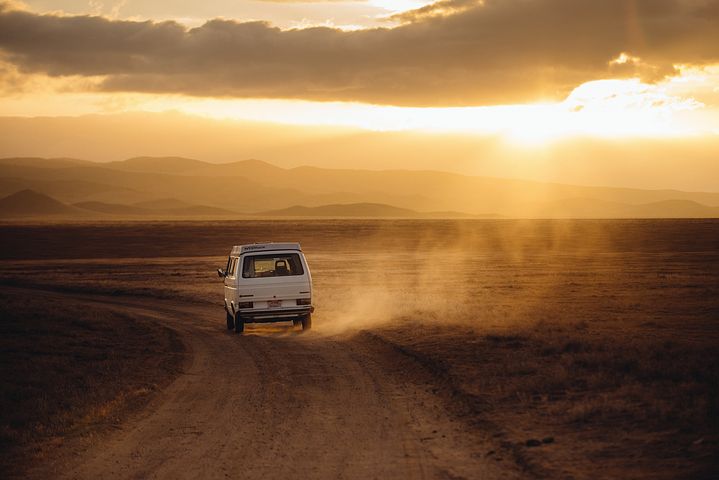
Festival summer, but make it sustainable
Summer is festival time. And it actually looks like we can finally dance again this year. But of course we put on our sustainability glasses here too and quickly realized: There is still room for improvement.
The ecological footprint of festivals is alarmingly high. An estimated 3,800 tons of CO2 were produced at the Danish Roskilde Festival in 2019 - and this is already considered a pioneer in terms of sustainability. On average, each festival visitor produces 15 kilos of waste . 30% of visitors in Germany simply leave their tents behind on the grounds. In Great Britain, the average is 80%.
Festivals often resemble a small city. They need their own infrastructure. Water, sewage, food, music technology and light shows, all of this consumes a lot of energy.
So where do we start if we want to make our festival visit more sustainable?
ARRIVAL AND DEPARTURE
Half of the emissions are almost always caused by the journey there and back. So it's worth starting here. Of course, it's a little easier to travel by car. However, this route makes festivals a real environmental sin. Instead, travel by train or bike. The euphoric atmosphere in the packed carriages on the way there and back is unique and worth it!
EQUIPMENT
Hard to believe but true: A third of all visitors simply leave their tents behind on the site. These are often cheap products that cannot be reused. This means that the tents cannot even be given to aid organizations and end up directly in the garbage. It is therefore worth spending a little more money and investing in quality equipment.
If that's too expensive or not worth it, you can simply borrow the equipment from friends. A tent, sleeping bag and sleeping mat are quickly collected and can then simply be returned. Why should everyone buy their own complete equipment when you can simply share?
NUTRITION
A vegan diet is often worthwhile at festivals: it is not only more sustainable, but also healthier and gives you the energy you need. The best thing of all: most plant-based spreads do not need to be refrigerated and therefore last much longer.
Also, think about how much you really want to eat beforehand and buy accordingly. Ideally, you won't have to buy anything extra or leave anything behind.
COSMETICS
Even if a festival means letting yourself go for three days, the need to freshen up arises from time to time. There is also a big trap here: festival cosmetics are often bought in sample and travel sizes from the drugstore. These contain very little and a lot of plastic. The alternative: use packaging-free soap and hair soap .
Very few festivals have a proper sewage system. Anyone who uses the showers on site will easily flush their shower gel or shampoo into the groundwater. A natural soap can help here. It can be used without worry and does not harm the soil.
LIGHT
You know the feeling: In the middle of the night, on the floor, you suddenly notice that it's getting a bit chilly. So you quickly go back to the tent and get your sweater. But it's pitch black on the campsite. For these cases, you always take a flashlight with you to a festival. But the classic flashlights are powered by batteries, which are unfortunately not environmentally friendly. Their production requires almost 500 times as much energy as they ultimately release.
Instead, there are now solar-powered flashlights. Simply place them in the sun during the day and they'll be able to find your sweater straight away at night.
DISHES
Even if it makes your backpack a little heavier, avoid disposable cardboard or plastic dishes and bring your own . There are now very light alternatives made of stainless steel. You can also take these with you to the stands on site and have the food served to you on them.
We see that with just a few tips and tricks, festivals can be made much more sustainable. However, the greatest responsibility ultimately lies with the organizers themselves.
When choosing your festival, you can pay attention to who is really serious about protecting the environment. Good indicators are, for example, when a festival sets up eco-toilets instead of portaloos. Or works with deposit systems. Or charges a garbage deposit on the ticket price. Or makes sure that the food stalls offer meat-free, regional and organic options. Or offers suitable workshops. Or pays a CO2 offset per artist. Or, or, or. There are a lot of options. Examples of mindful festivals in Germany include the Fusion Festival and the Wilde Möhre Festival. Let's try together to make our festival visits more climate-friendly.
Have you had positive experiences with certain festivals in terms of sustainability? Let us know.



1 comment
Zum Thema Taschenlampen: ..oder einfach wiederaufladbare Akkus statt Batterien rein tun. Bin immer wieder erstaunt wie viele Geräte heute noch unnötigerweise mit Einwegbatterien betrieben werden, wtf… :-/
L
Leave a comment
This site is protected by hCaptcha and the hCaptcha Privacy Policy and Terms of Service apply.